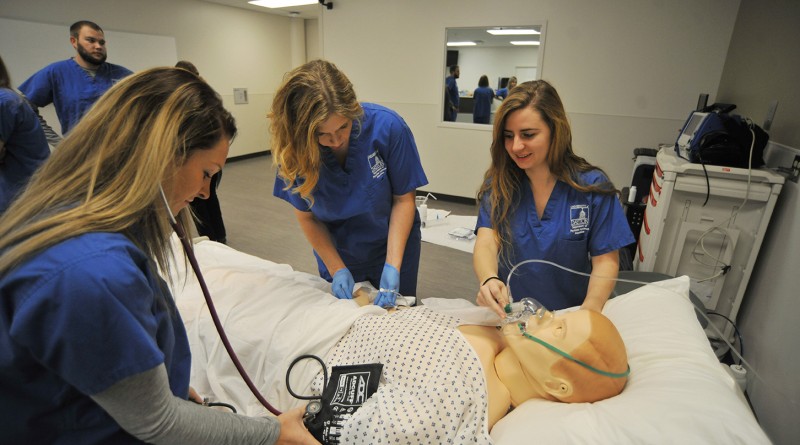UD brings Marianst values to medical field
By: Julia Hall – Staff Writer
A ceremony monumentalizing a transition for the University of Dayton and the education of 30 students in the new Physician Assistant Program, will occur in the Kennedy Union Ballroom, Friday, Dec. 18.
The white coat ceremony celebrates the completion of the classroom portion of the Physician Assistant Program by the university’s first cohort, but, even more importantly, the commencement of their clinical studies.
“Going back about a decade, there was not a significant health dimension to the programs at UD, and that is unusual for a Catholic university,” explained Kevin Kelly, Ph.D., dean of the School of Education and Health Sciences.
“When I was hired in 2010, there was an initial proposal or idea we considered the Physician Assistant Program as a next offering,” Kelly said. “We did a study of it my first year here, and we made the decision to go ahead and to offer and to initiate a Master of Physician Assistant Practice Program.”
Since the start of the program, the first class has been proceeding in their studies for over a year.
Director of Clinical Education Kelli Huesman elaborated, “They are all really excited to be done with the didactic year and jump into clinicals. This is what they spent the last 15 months looking forward to is getting out in the field.”
“It has been a year and a couple months. It is really exciting. I know a lot of us who are really ready to actually practice what we have learned,” said Kelly Miller, a member of the first cohort of the program.
The students’ coursework demanded a rigorous study of the human body. The curriculum teaches a broad range of medicine in great detail in a relatively short period of time. UD follows a unique method and structure in the PA program.
“We are a modular, systems-based program instead of a traditional program,” Huesman explained. “So, these students go through, instead of a semester having a pharmacology class, an anatomy class, a clinical medicine class, they are taught by systems-based. When they are learning cardiology, they are learning all-encompassing cardiology.”
The cohort has completed this didactic training, and the white coat ceremony represents an important point in their study and personal pursuits.
“I haven’t seen my brother in a year, but he is actually coming down from New York for my white coat ceremony,” Miller said. “My parents are coming, too. It will be really great having them there.”
The ceremony indicates they will be entering the more hands-on, experiential portion of the program in January.
“We are doing what we call clinical prep week right now, which is kind of just getting their information, getting prepared to start their clinicals,” Huesman said. “They will start clinicals Jan. 4, and then they are in some sort of rotation for the next 12 months.”
“Everybody has to do a minimal of eight required rotations, and then they get to pick a ninth elective,” Huesman adds.
Miller said her first clinical is at the Miami Valley Hospital in Centerville, Ohio. Like the other cohorts, she will start with family medicine because it eases them into the field.
The physical white coat is not the only element of the ceremony. An oath will also be avowed. This cohort had the flexibility and opportunity to write the oath they will pledge Friday—and the next cohorts will pledge in the future.
“They take an oath during the ceremony. All people have heard of the Hippocratic Oath. These guys have actually created their own oath,” Huesman said. “They modeled it from several other oaths, and then kind of fine-tuned it and honed it also to represent UD, the Marianist beliefs, the service-oriented nature.”
As the graduate students in the PA program tailored their oath to denote the impact of their UD experience and the Marianist dedication they want to carry into the field, Kelly also commented on the impact of the PA program on Dayton.
“As a Marianist organization, you want to do things that make a positive contribution to the community,” Kelly stated. “For us, we have traditionally done that through education. That has been a historical legacy for us. So to be able to go over into a whole new field and then be able to contribute to children, family, elders, then you are making a more comprehensive contribution to the community.”
“I think the challenges they faced are that we are a new program. So, we are developing the program,” Huesman said. “For all of us, there are a lot of things we think are going to work really well. They are a little bit of a test group, but I think they have handled it very well.”
Photo of students in cohort practicing for their clinicals courtesy of UD Media Relations.

